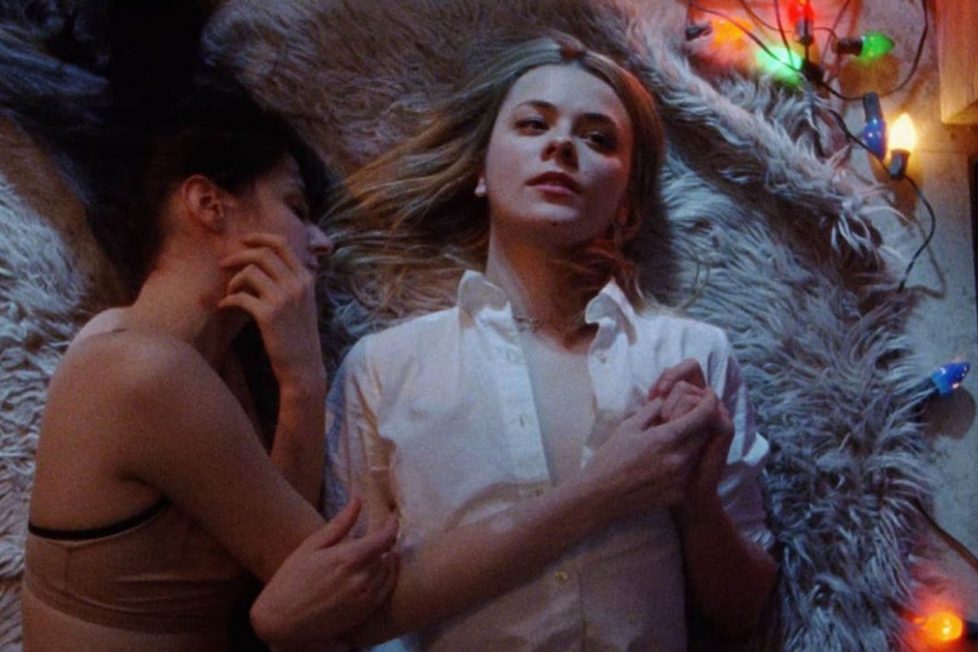THE SCARY OF SIXTY-FIRST (2021)
Two roommates' lives are upended after finding out that their new Manhattan apartment harbours a dark secret.

Two roommates' lives are upended after finding out that their new Manhattan apartment harbours a dark secret.


The Scary of Sixty-First marks the directorial debut of actress and podcaster Dasha Nekrasova. Based on her podcast Red Scare’s reputation for being critical of left-wing politics and cultural trends from the ground floor of New York City’s Lower East Side, the expectations for Nekrasova’s film were somewhat charged. If her polarising persona wasn’t enough to cause a stir, the film’s central topic—millionaire sex-trafficker and paedophile Jeffrey Epstein—is incredibly controversial in its own right. Her exploration of the conspiracy surrounding his life and death through mystical forces, Vyvanse-fuelled investigations, and hysterical performances is an unexpectedly cinematic take on the hidden world of America’s elite.
The film kicks off with a great rent deal gone wrong. Roommates Addie (Betsey Brown) and Noelle (co-writer Madeline Quinn) find a gorgeous new place on the Upper East Side. It just has a couple of quirks: it’s a railroad, there’s a woman (Nekrasova herself) ringing the doorbell day and night, and the mattress has a huge bloodstain. Despite Addie’s attempts to cast away the bad energy, it catches up with her quickly. Meanwhile, Noelle befriends Nekrasova’s character who, after briefly posing as a real estate broker, reveals she’s independently investigating the death of Jeffrey Epstein—independently because, “I think we can all agree the feds are not to be trusted in this case.” They have several theories about who may have been responsible: the Royal Family to protect Prince Charles, or the Clintons to protect Bill. Noelle continues to find Tarot Cards scattered around the apartment while Addie spirals further and further into hysteria. Her passive boyfriend Greg (Mark Rapaport), although occasionally well-meaning, is too wilfully ignorant to understand her extreme behaviour and ultimately isn’t much of a support.
Through the stimulant-addled paranoia of her character, Nekrasova embodies the neuroses of the contemporary cultural moment. She expands on this theme through specifically feminine superstitions like New Age spirituality (in the form of sage and Tarot) and possession, which hearkens back to the infamous Salem witch trials. The latter is accentuated by Brown’s OTT performance, an unsettling highlight of the film. The New Age spirituality is culturally linked to the left and associated with values of love and acceptance. In the film, these practices are used as an instrument of the elite for supernatural horror. Nekrasova also employs erratic imagery, from a shaky camera to an anime video game, to underline the instability that’ so central to Scary.
Nekrasova employs a campy and comedic playfulness that brings the film together but may leave some feeling alienated. The use of buzzwords like “red-pilled” and “Pizzagate” is tinged with irony through hers and Quinn’s deadpan delivery. Although both Nekrasova and her character take these issues seriously, she sees the comedy in her role as a provocateur. Even in the film’s gravest moments there’s bright red fake blood, a frenzied performance from Nekrasova, and a clueless Greg to always ground the scene with levity. The ironic tone, as well as the more amateurish texture of the cinematography and blood, gives the film a layer of artificiality that caters to an artsy urbanite crowd but could estrange those outside of that niche. But is it appropriate to fault Nekrasova for knowing her audience?
The Scary of Sixty-First re-hashes many of the tropes of feminist art, but succeeds in re-contextulizing them to derive new meaning. The motif of fruit, often used to represent women’s reproductive organs, is seen torn apart and mixed with garbage until unrecognisable. This image is one of several in the film that evokes a potent disgust in association with female sexuality. Other symbols in the film, like the Royal Family’s teaspoon, are loaded with several layers of significance. Firstly, it suggests a link between Epstein and the British Royalty that’s grounded in real-life regalia and yet still entirely ephemeral. Further, the teacup and teaspoon are traditionally a symbol of feminine high society. The film’s theory about Queen Elizabeth II taking out Epstein to protect Charles, as well as its somewhat comedic nod to Ghislaine Maxwell’s involvement in Epstein’s crimes, suggests that Nekrasova meant to draw attention to women’s involvement in these heinous criminal acts that are traditionally linked to men. This converts the central issue of the film and the topic it surrounds from one of feminism to one of classism, from the power of men to the power of the elites.
It may credit its most direct influence in Kubrick’s Eyes Wide Shut (1999), but The Scary of Sixty-First is truly somewhere between Suspiria (1977) and Ghost World (2001) for the digital age. While the sarcastic-nightmare-downer-girl ideology is not necessarily a universally relatable one, Nekrasova accurately diagnoses a cultural condition and puts it on display in every facet of her film.
USA | 2021 | 81 MINUTES | 1.85:1 | COLOUR | ENGLISH
director: Dasha Nekrasova.
writers: Dasha Nekrasova & Madeline Quinn.
starring: Betsey Brown, Madeline Quinn, Dasha Nekrasova & Mark Rappaport.
